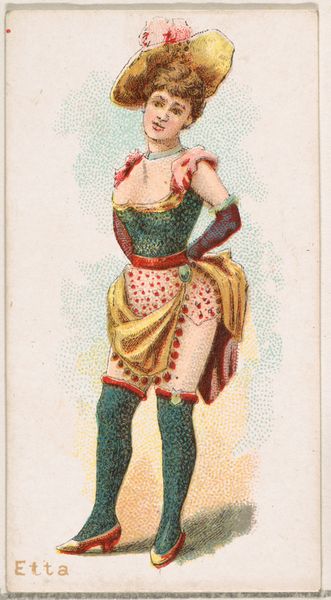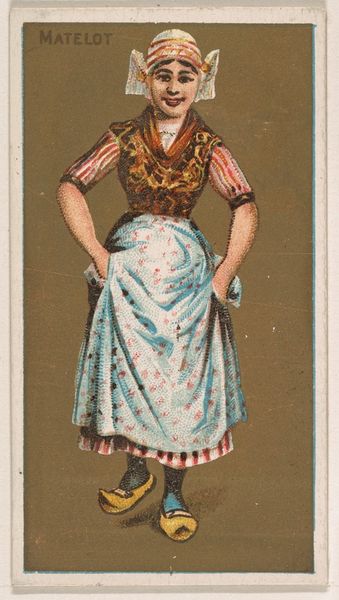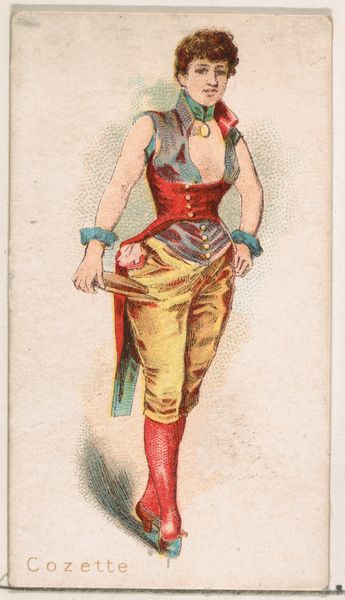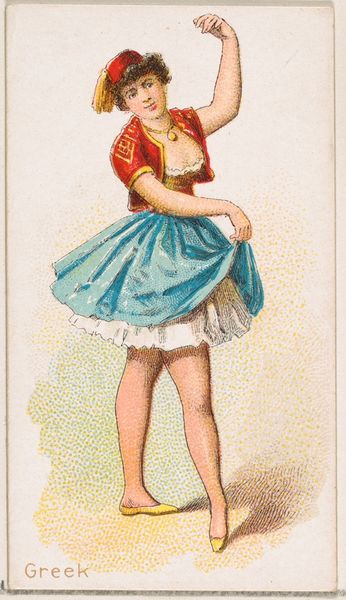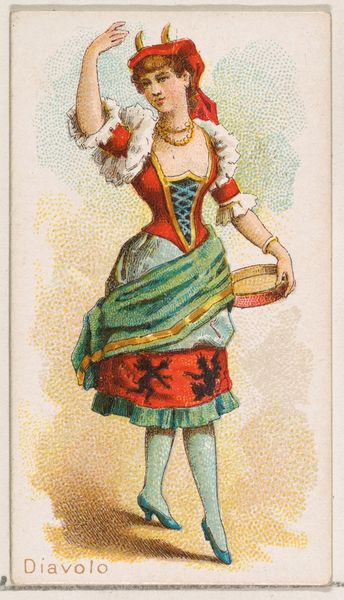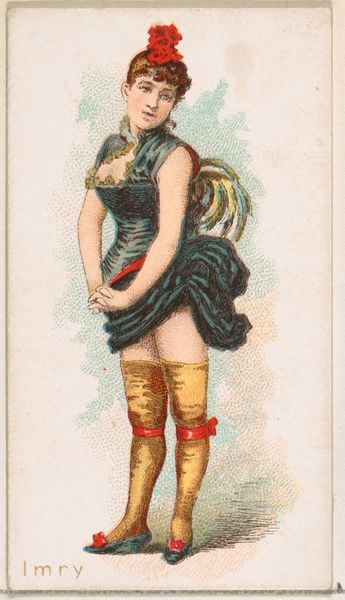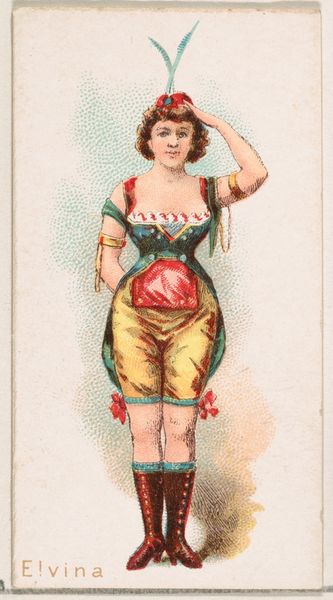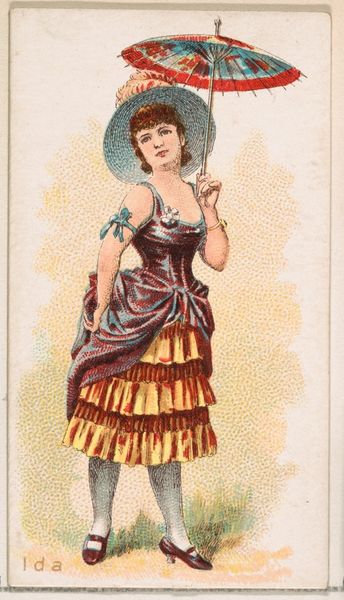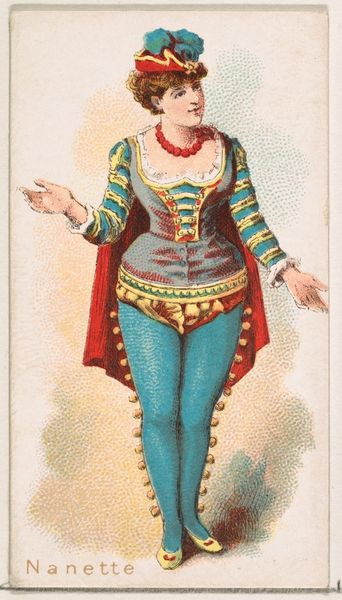
Mignon, from the Ballet Queens series (N182) issued by Wm. S. Kimball & Co. 1889
0:00
0:00
graphic-art, print
#
portrait
#
graphic-art
# print
#
caricature
#
figuration
#
coloured pencil
#
portrait drawing
#
watercolour illustration
Dimensions: Sheet: 2 3/4 × 1 1/2 in. (7 × 3.8 cm)
Copyright: Public Domain
Editor: Here we have "Mignon, from the Ballet Queens series (N182) issued by Wm. S. Kimball & Co.," a coloured pencil and print piece dating to 1889. I'm struck by its, almost exaggerated, portrayal of femininity and wonder about its purpose. What story does this artwork tell from a historical viewpoint? Curator: It's intriguing, isn’t it? As a commercial print intended as a collectable included with tobacco products, this image offers a window into the era’s commodification of beauty and performance. Think about the social status of ballet dancers at the time, and how these “queens” were both admired and perhaps seen as figures of spectacle. The title itself seems to suggest this. Editor: So it’s less about art for art's sake and more about… branding? How did these images function in popular culture? Curator: Exactly. Consider the role of Wm. S. Kimball & Co. By distributing these cards, the company associated their product with desirable ideals: beauty, sophistication, exoticism - all encapsulated by the "Ballet Queen." The stylization of "Mignon," almost a caricature with the tightly laced corset and bold colours, may play on common tropes and fantasies associated with ballet dancers. Editor: That makes me think about how women were represented in advertisements, like playing into stereotypes to sell products. Curator: Precisely! These cards were circulated widely, shaping perceptions and contributing to the broader visual culture. The influence of Japonisme is apparent here; consider how that might impact popular reception, bringing in ideas of Orientalism, fantasy, and the exotic in this presentation. Do you think audiences recognized or questioned this blend of cultural references? Editor: I guess they didn't really question the underlying message, maybe even reinforcing some stereotypical views on women. I’ll definitely look at other Kimball & Co. pieces with these ideas in mind now! Curator: Indeed. Thinking about the political implications of image-making helps reveal so much.
Comments
No comments
Be the first to comment and join the conversation on the ultimate creative platform.
